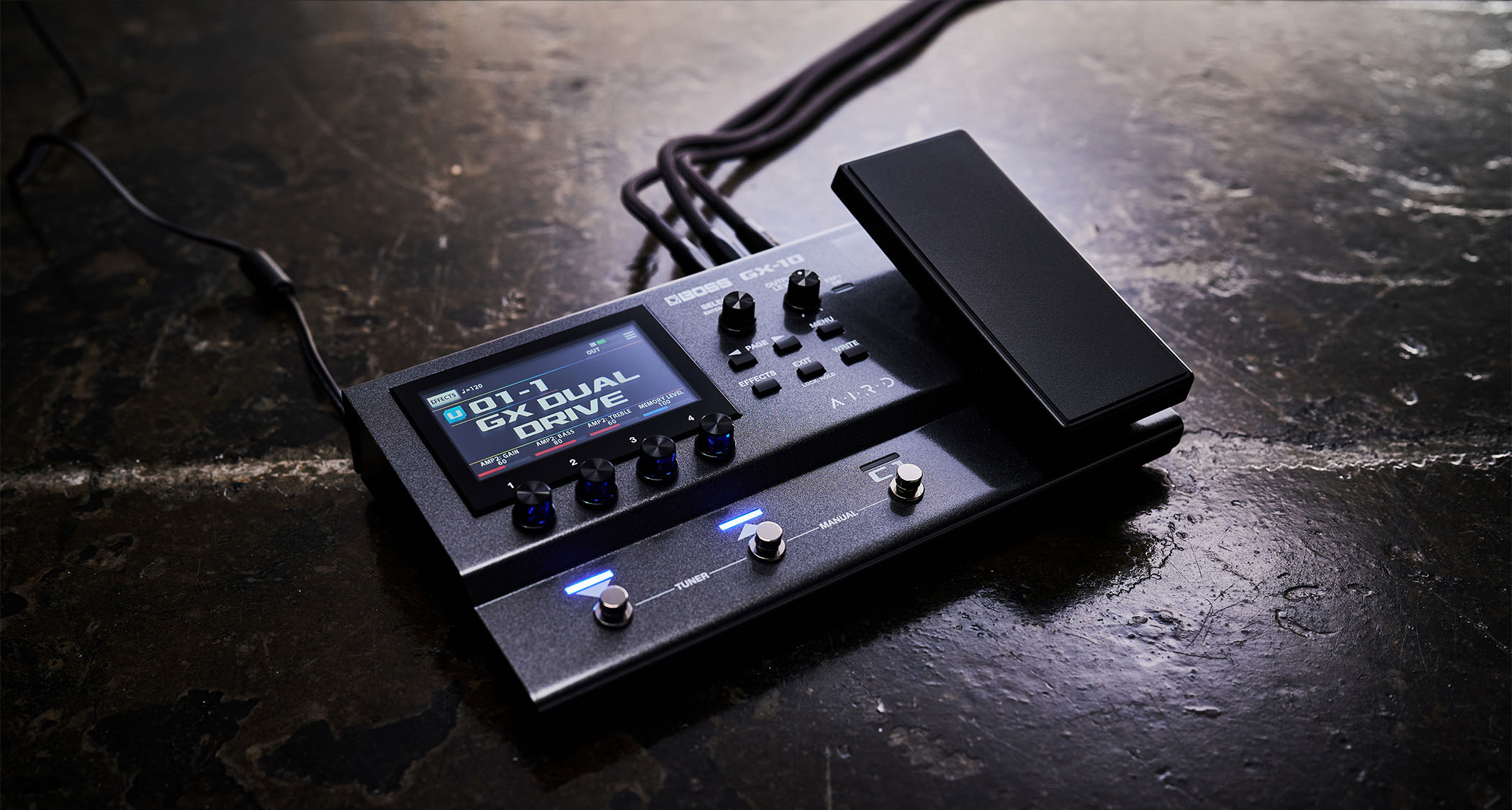
Boss has unveiled the GX-10, a typically feature-packed amp modeller and guitar multi-effects unit that packs all the processing power and sounds of the GX-100 into a smaller format – and it also has the same LCD colour touchscreen as its larger sibling.
The GX-10 is designed for guitar and bass guitar alike, and presents a bounty of sounds for both. All in, there are some 32 amp models, nine for bass and 23 for electric guitar.
This being a Boss production there is an abundance of effects here, with 170 options including various drives, distortions and boosts, all the modulation family – including those industry-standard Boss chorus pedal sounds that have arguably never been bettered – reverbs, delays and some of the Japanese brand’s more off-road and cult classic sounds.
Dial in some staccato chop with the Slicer. Take your guitar’s signal two octaves down with the Octave.
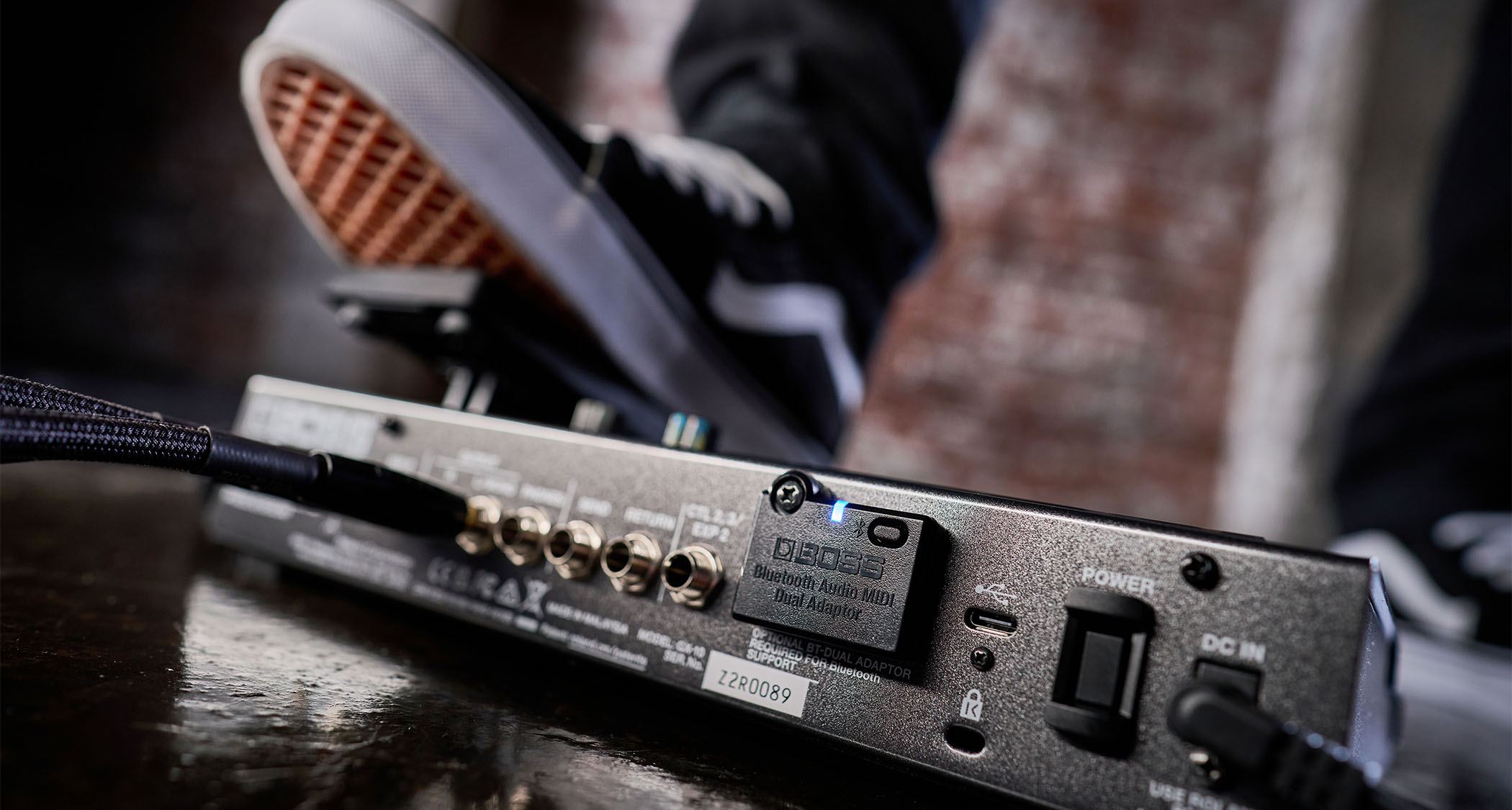
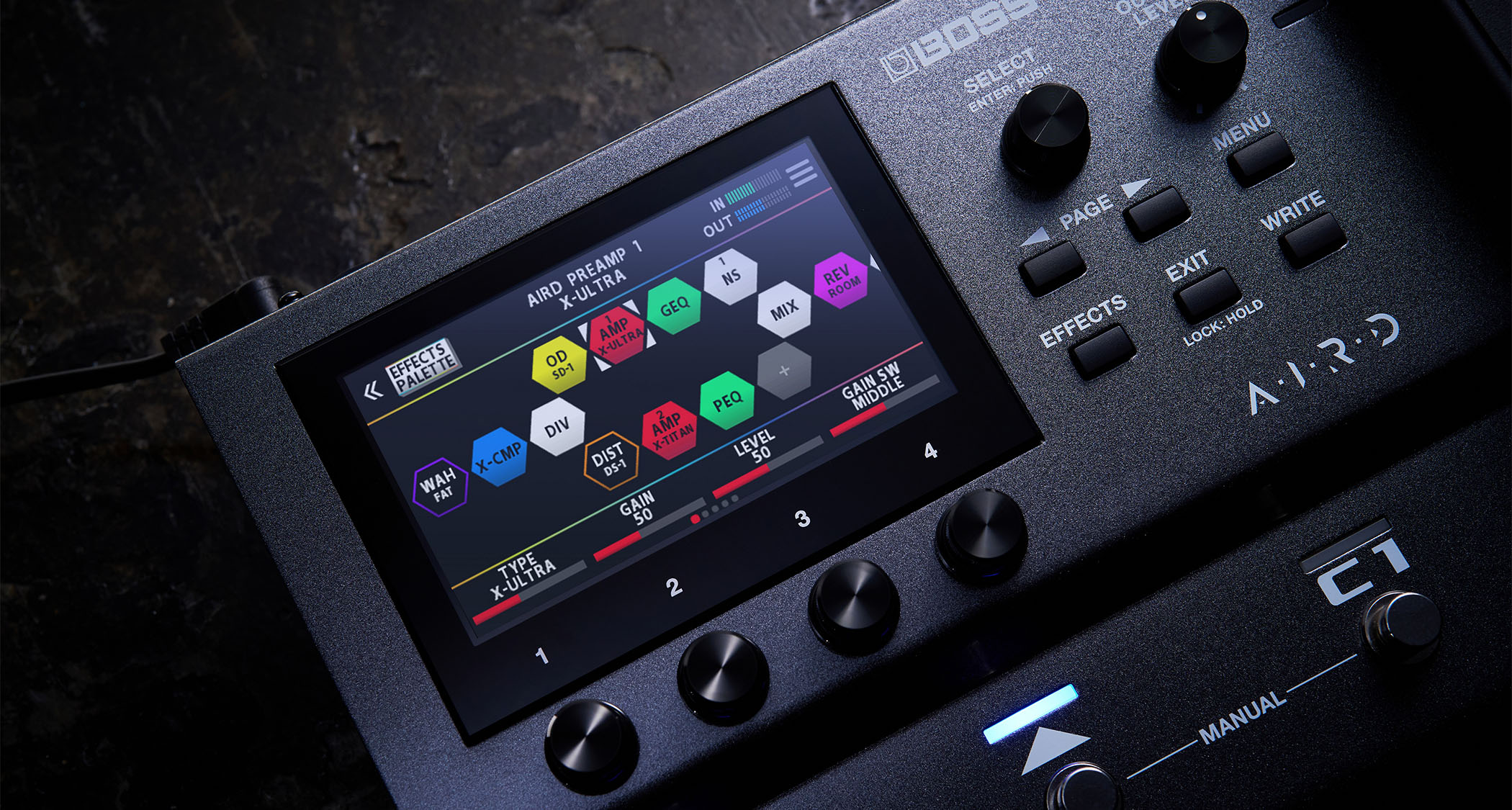
And while you’re at it, take that vintage SG-1 Slow Gear out of your cart; there’s no need to be spending over 500 bucks on an out-of-production pedal when you can have those violining and volume effect sounds right here – and you can program them into a preset. The looper can record 38 seconds in mono, 19 in stereo.
Boss says the GX-10 is designed for the stage, studio or practice space… In short, you can take it anywhere, and at 2.2kg you can throw it in your backpack and use it as a fly-rig. Dual-function footswitches allied to the touchscreen should mean little is compromised just because the pedal is smaller.
You can assign any of the three footswitches to perform a number of functions, from turning an overdrive on for a solo to for changing numerous parameters with one click. There are 66 preset banks and space onboard the unit for 198 user-programmed presets.
The GX-10 has an integrated expression pedal that can similarly be assigned to any number of effects parameters – and right out of the box it is configured so that you can toggle between using it as a volume or wah pedal, and to turn the onboard guitar tuner on and off.
We were big fans of the GX-100’s amp sounds and these are the same sounds that you will find here, with Boss’ proprietary AIRD technology doing a sterling job of emulating tube amp tone and feel with a digital model.
Those whose chosen medium positions them out there on the outer limits of metal guitar have some options with the high-gain trifecta of Boss’ X-Ultra, X-Optima, and X-Titan models.
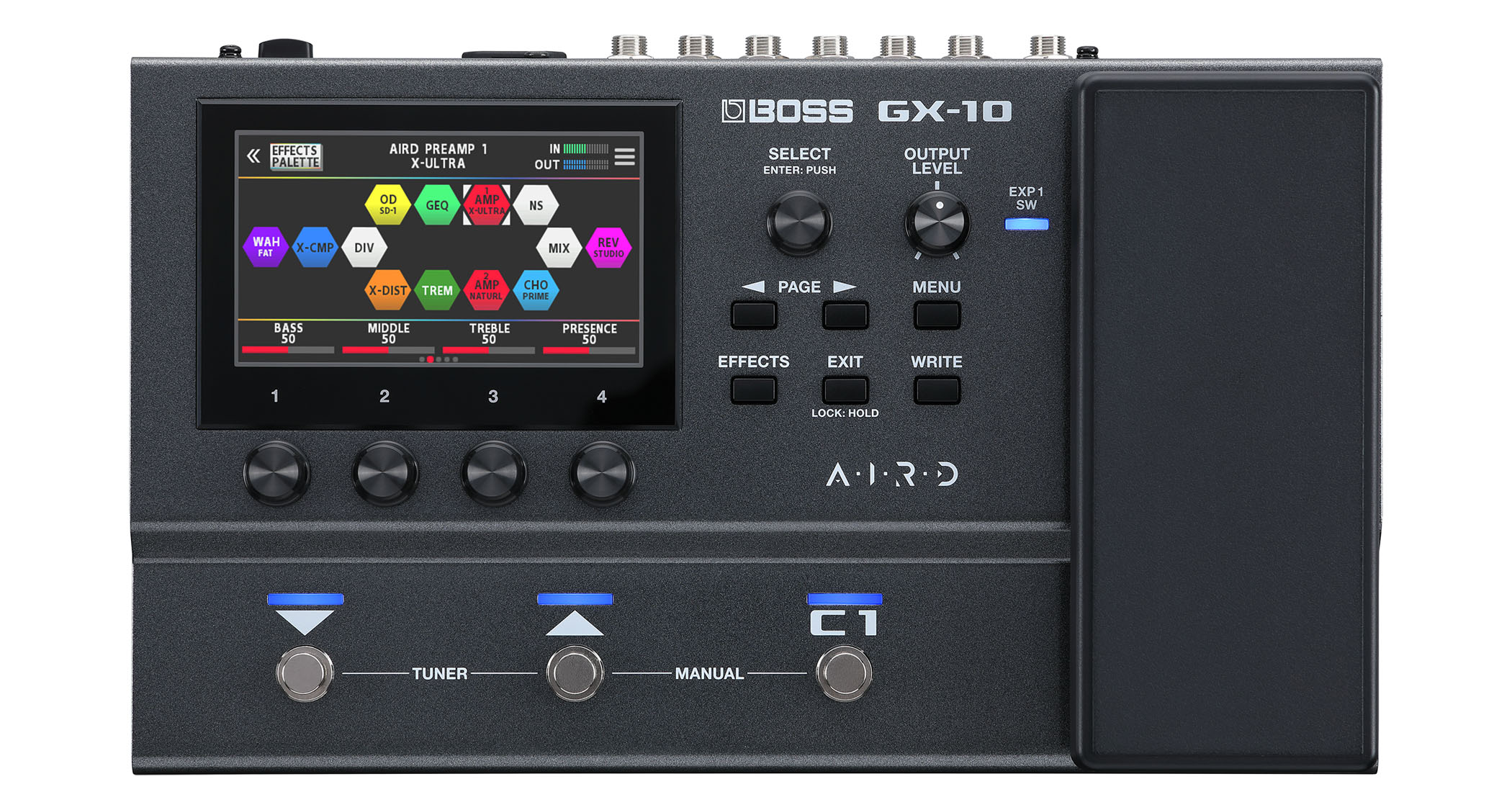
Around the back of the GX-10 you will find a send/return for the effects loop, allowing you to use it with your pedalboard. There are outputs for running in mono or stereo, plus inputs for expanding the unit with an external expression pedal or control pedal.
There is a USB-C connection that allows you not only to make deeper edits and organise your sounds via the Boss Tone Studio app but to use the GX-10 as a guitar audio interface. And there is a 1/4” headphones output for monitoring and silent practice. You can also connect to the GX-10 via Bluetooth and edit settings and stream audio through it. But you will need the BT-DUAL Bluetooth Audio MIDI Dual Adaptor for this. Sold separately, the BT-DUAL will cost you £44.
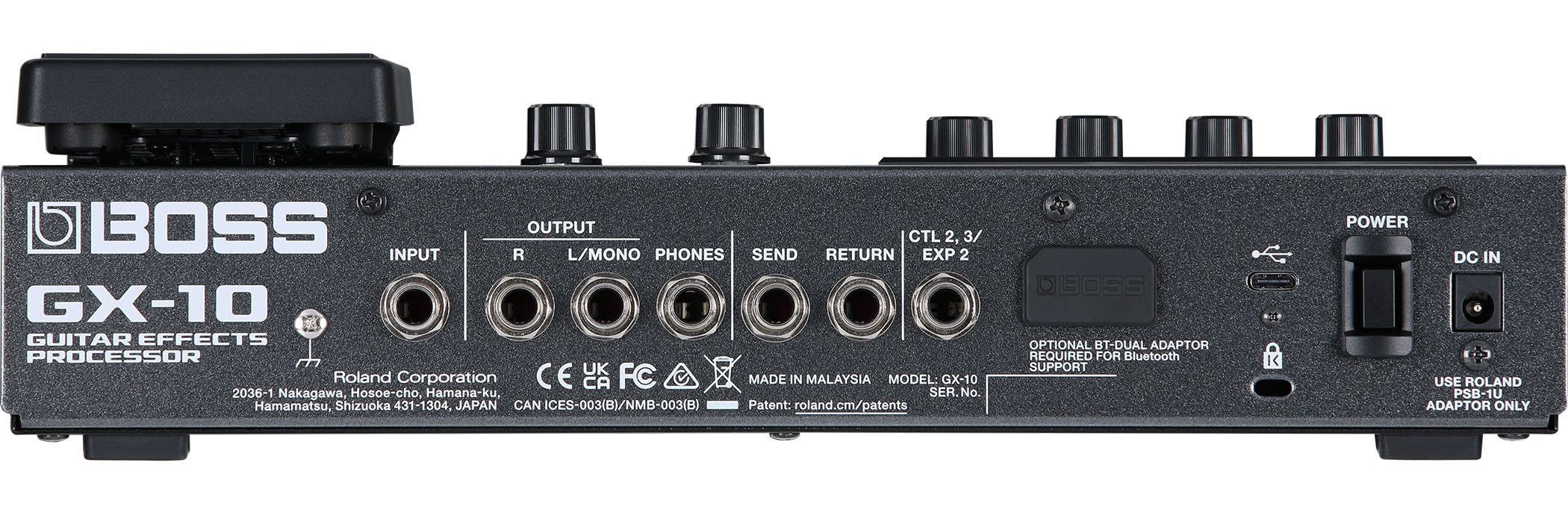
Players also have access to the Boss’s Tone Exchange platform, where you can share Livesets with other GX-10 users and download player presets to your unit, and because the GX-10’s digital brain is the same as the GX-100, all the Livesets that had been created for the latter are compatible on the former.
This is the year 2024 so of course there are numerous options for cab sims and IR uploading. The sound quality is premium. The GX-10 has a 48kHz sampling rate, 32-bit DA conversion, 32-bit floating point processing, and there is a superb signal-to-noise ratio thanks to the 24-bit AD conversion that uses Roland/Boss’ proprietary Adaptive Focus method.
The price is not bad either – expect to pay £349/$399. The Boss GX-10 is available now. See Boss for more details.







